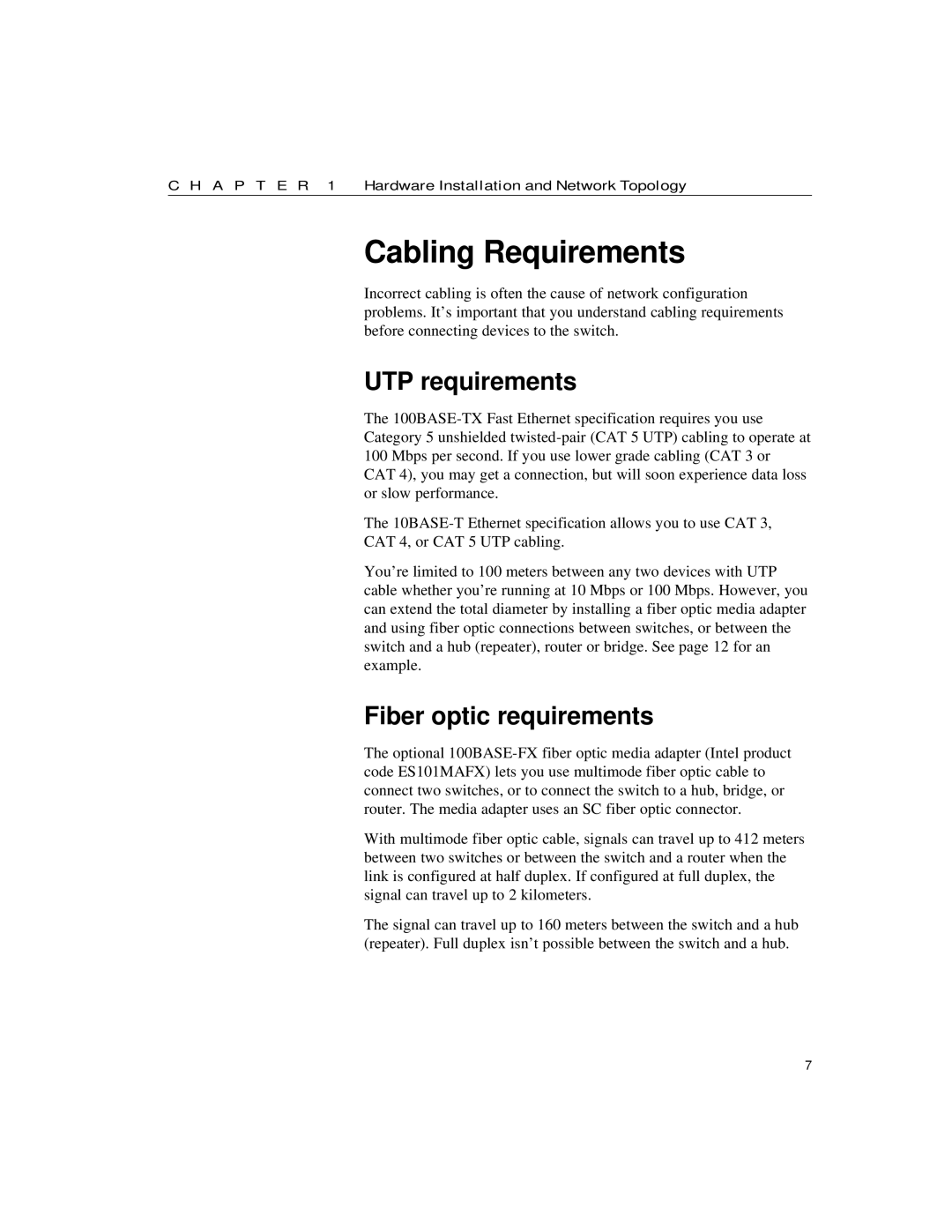C H A P T E R 1 Hardware Installation and Network Topology
Cabling Requirements
Incorrect cabling is often the cause of network configuration problems. It’s important that you understand cabling requirements before connecting devices to the switch.
UTP requirements
The
The
You’re limited to 100 meters between any two devices with UTP cable whether you’re running at 10 Mbps or 100 Mbps. However, you can extend the total diameter by installing a fiber optic media adapter and using fiber optic connections between switches, or between the switch and a hub (repeater), router or bridge. See page 12 for an example.
Fiber optic requirements
The optional
With multimode fiber optic cable, signals can travel up to 412 meters between two switches or between the switch and a router when the link is configured at half duplex. If configured at full duplex, the signal can travel up to 2 kilometers.
The signal can travel up to 160 meters between the switch and a hub (repeater). Full duplex isn’t possible between the switch and a hub.
7
